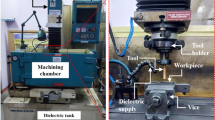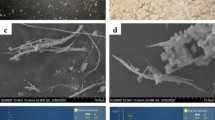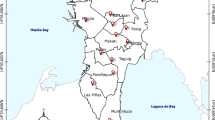Abstract
The comparison of laser induced fluorescence real-time monitoring technology application versus traditional planktonic bacteria and dust particle testing methods in the monitoring of indoor air microorganism in our hospital dentralized drug dispensing center was carried out, so as to provide technical support for the real-time monitoring and early warning of PIVAS to the planktonic bacteria and dust particles. First of all, the aerosol generator was used to conduct bacteria generation experiments, and the feasibility of the substituted method was verified using 405 nm laser induced fluorescence technology and the traditional air plankton sampler. Secondly, the actual application effects of the real-time monitoring system of biological aerosol, plankton-sampler and dust particle counter of laser-induced fluorescence technology were compared and evaluated in the PIVAS, 300,000-level buffer area and non-clean control area in our hospital. The real-time monitoring system of bioaerosol using laser-induced fluorescence technology has a significant sensitivity advantage over the traditional plankton-sampling apparatus, and its verification indexes, all meet the relevant requirements under USP <1223 >. There is no significant difference in the dust particle counting efficiency of the real-time monitoring system of bio-aerosol with laser induced fluorescence technology in PIVAS clean area. Therefore, the real-time monitoring system of bio-aerosol with laser induced fluorescence technology can be applied to the real-time monitoring of environmental microbial pollution in PIVAS clean room, and it has a broad application prospect in PIVAS environmental control and even hospital environmental control. In the future, it can be effectively combined with the PIVAS Intelligent Operation Service Platform in hospital.


















Similar content being viewed by others
References
Abbas KM, Dorratoltaj N, O’Dell ML, Thomas PB, Kerkering M (2016) Clinical response, outbreak investigation, and epidemiology of the fungal meningitis epidemic in the united states: systematic review. Disaster Med Public Health Preparedness 10:145–151
Chunjuan Lu, Guorong S, Jiao C (2016) Infection and control management in clean area of pharmacy intravenous admixture service. Anti Infective Pharmacy 4:835–837
Eaton T, Davenport C, Whyte W (2012) air borne microbial monitoring in an operational cleanroom using an instantaneous detection system and high efficiency microbial samplers. Europ J Parenter Pharmac Sci 17(2):61–69
Guorong S, Xiaojun R, Wenliu Y et al (2014) Practice of environmental dynamic monitoring in clean room of Pharmacy Intravenous Admixture Service Center [C]. 2014 Chinese pharmacy conference and the 14th Chinese pharmacist Zhou Lun Wen collection
Hill SC, Pinnick RG, Nachman P et al (1995) Real-time measurement of emission spectra of airborne biological particles. Appl Opt 34(30):7149–7155
Huffman JA, Treutlein B, Poschl U (2010) Fluorescent biological aerosol particle concentrations and distributions measured with an UI-traviolet Aerodynamic Particle Sizer(UV-APS) in Central Europe. Atmos Chem Phys 10:3215–3233
Ji Q, Wenjing Z (2017) Comparative analysis of work quality before and after PIVAS implementation of quality control standards and rules in our hospital. Chin Pharmacy 28(16):2289–2291
Junming L, Bingqing H, Lijuan Y, Kunqi D, Longxi L, Ran C, Ye L, Ye L, Guoqing H (2016) Correlation study of a microbial monitor based on fluorescence intensity principle for indoor air microbial monitoring. Chin J Disinfect 33(9):830–832
Luo Jianhua Xu, Ping WC et al (2012) Comparison of microbial contamination in infusion allocation in outpatient and emergency department and allocation center. Chin J New Drugs Clin Med 31(10):627–629
Qingxian Mi (2015) Discussion on total quality management in pharmacy intravenous admixture service. Chin J Pharmacy Clin Sci 15(10):1510–1511
Richardson SC et al (2019) Bioaerosol detection over Athens, Greece using the laser induced fluorescence technique. Sci Total Environ 696:133906
Rui F, Ruiling Z (2017) Improve the quality of PIVAS work by relying on the quality trust team creation activities. China Health Qual Manag 24(2):81–85
Wenxiu S, Chunzhi Z, Jiuxing Z et al (2012) Drug safety management in pharmacy intravenous admixture service. Pharmaceut Guide 31(1):122–123
Xiangqun Z, Hongning L, Han C et al (2009) Control and management of microbial contamination in clean area of pharmacy intravenous admixture service. Int J Med Health 15(22):98–101
Zhen LM, Jian L (2013) Analysis of factors influencing sampling effect of airborne planktonic bacteria. J Taiwan Prevent Med 19(5):60–66
Acknowledgements
This work was supported by the Minsheng Technology-Key Technology Application Special Project of Suzhou Science and Technology Bureau (No. SS2019042).
Author information
Authors and Affiliations
Corresponding author
Ethics declarations
Conflict of interest
The author report that there is no conflict of interest.
Additional information
Publisher's Note
Springer Nature remains neutral with regard to jurisdictional claims in published maps and institutional affiliations.
Rights and permissions
About this article
Cite this article
Geng, Z., Yang, W., Wei, S. et al. Verification of Real-Time Microbial Monitoring Technology Based on the Principle of Laser-Induced Fluorescence Under USP <1223> Standard and Prospective Application in Our Hospital PIVAS Clean Room . Int J Pept Res Ther 28, 4 (2022). https://doi.org/10.1007/s10989-021-10315-8
Accepted:
Published:
DOI: https://doi.org/10.1007/s10989-021-10315-8




